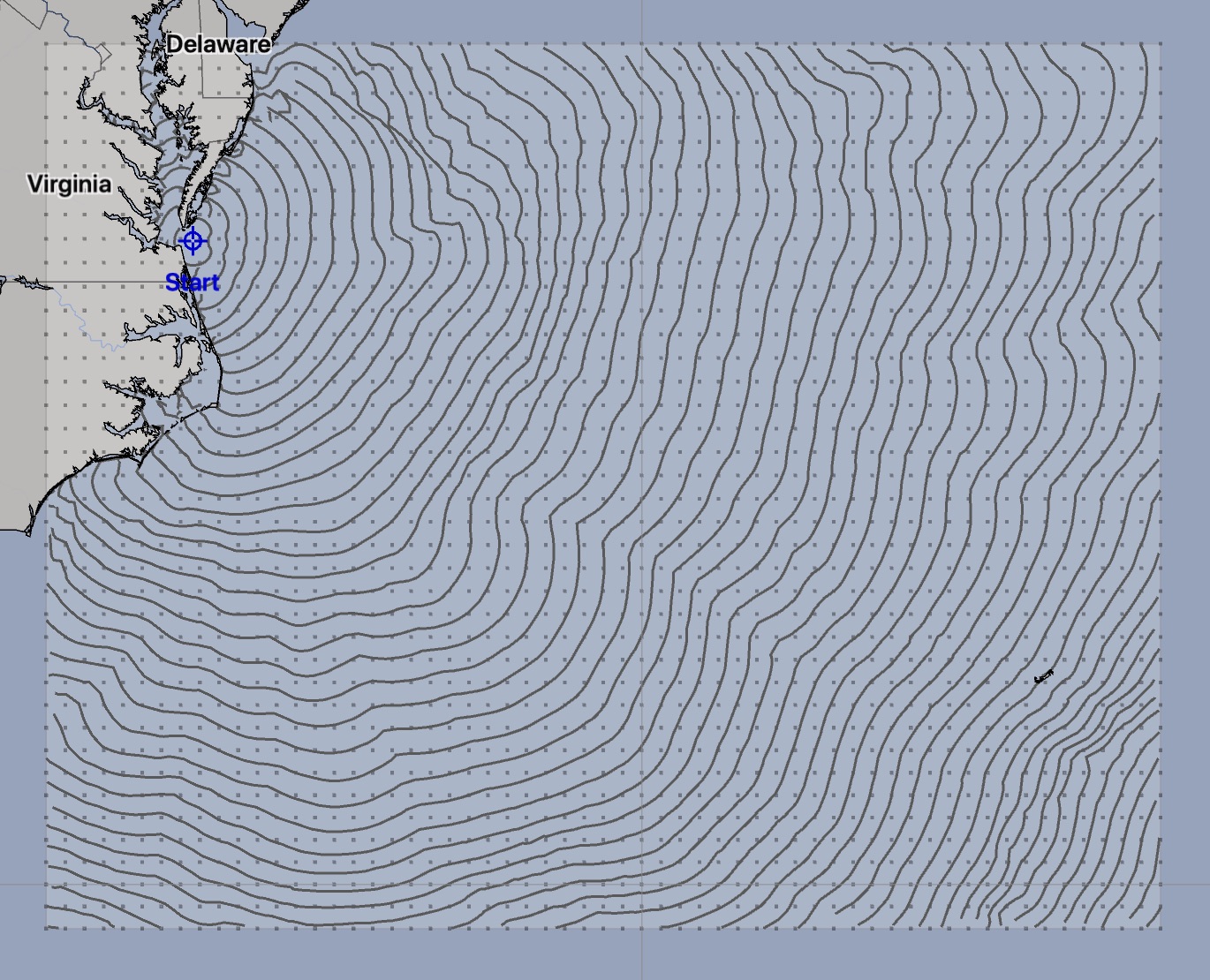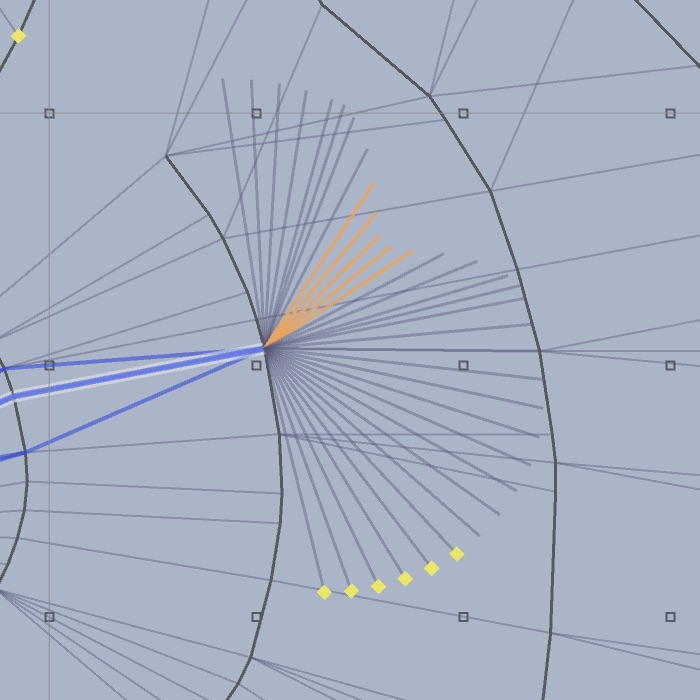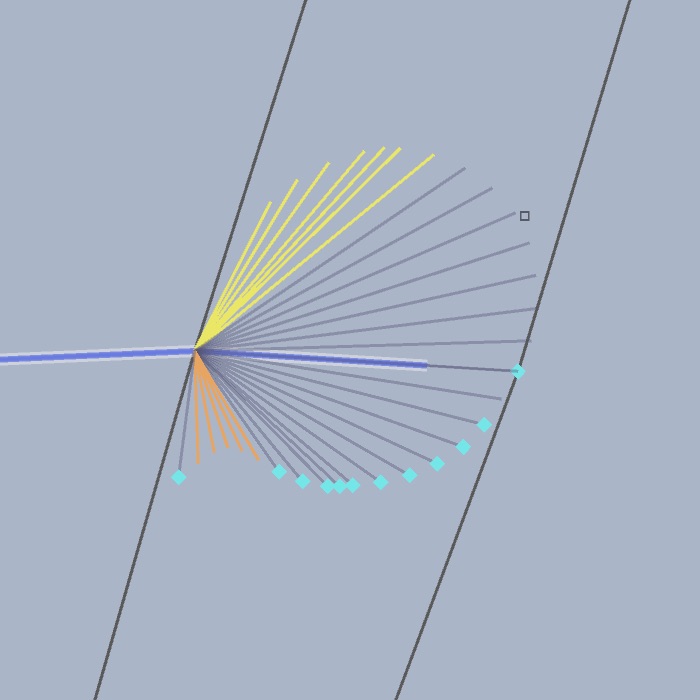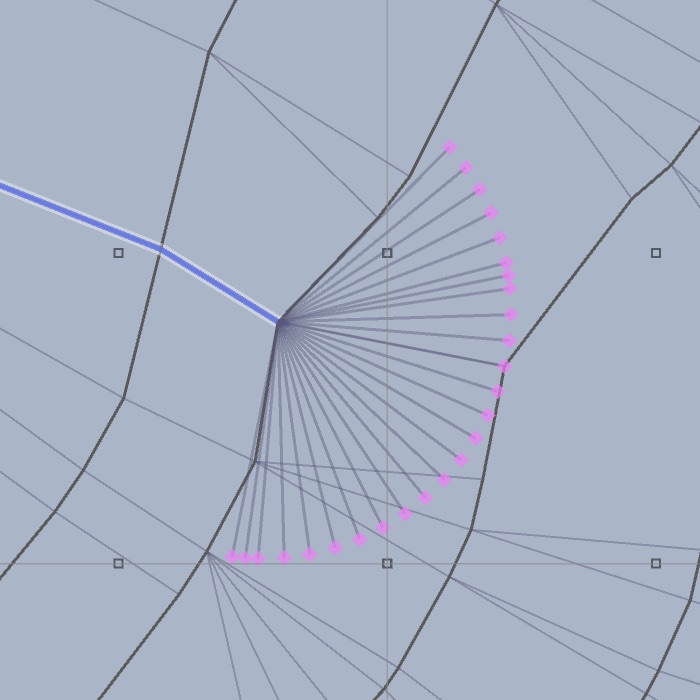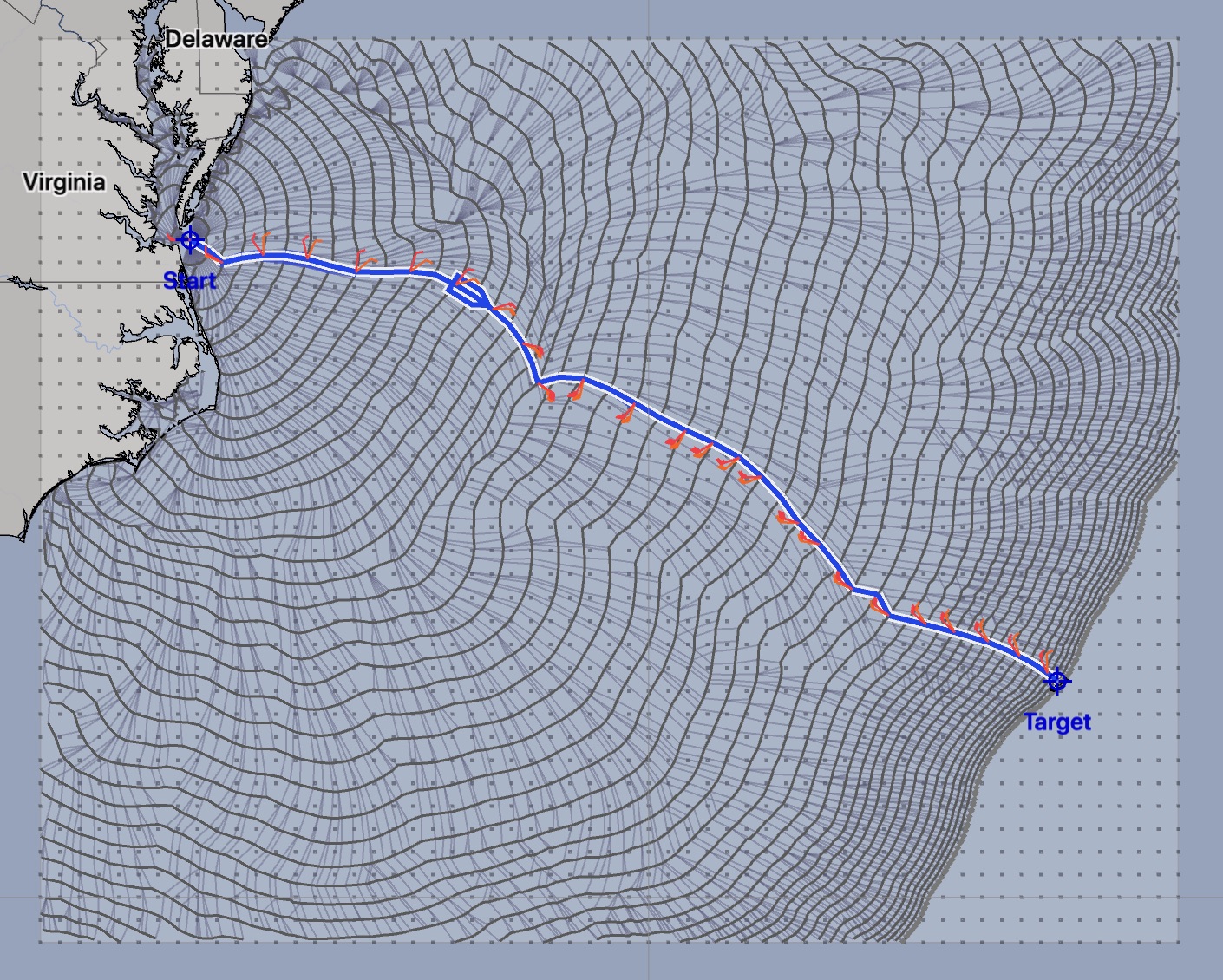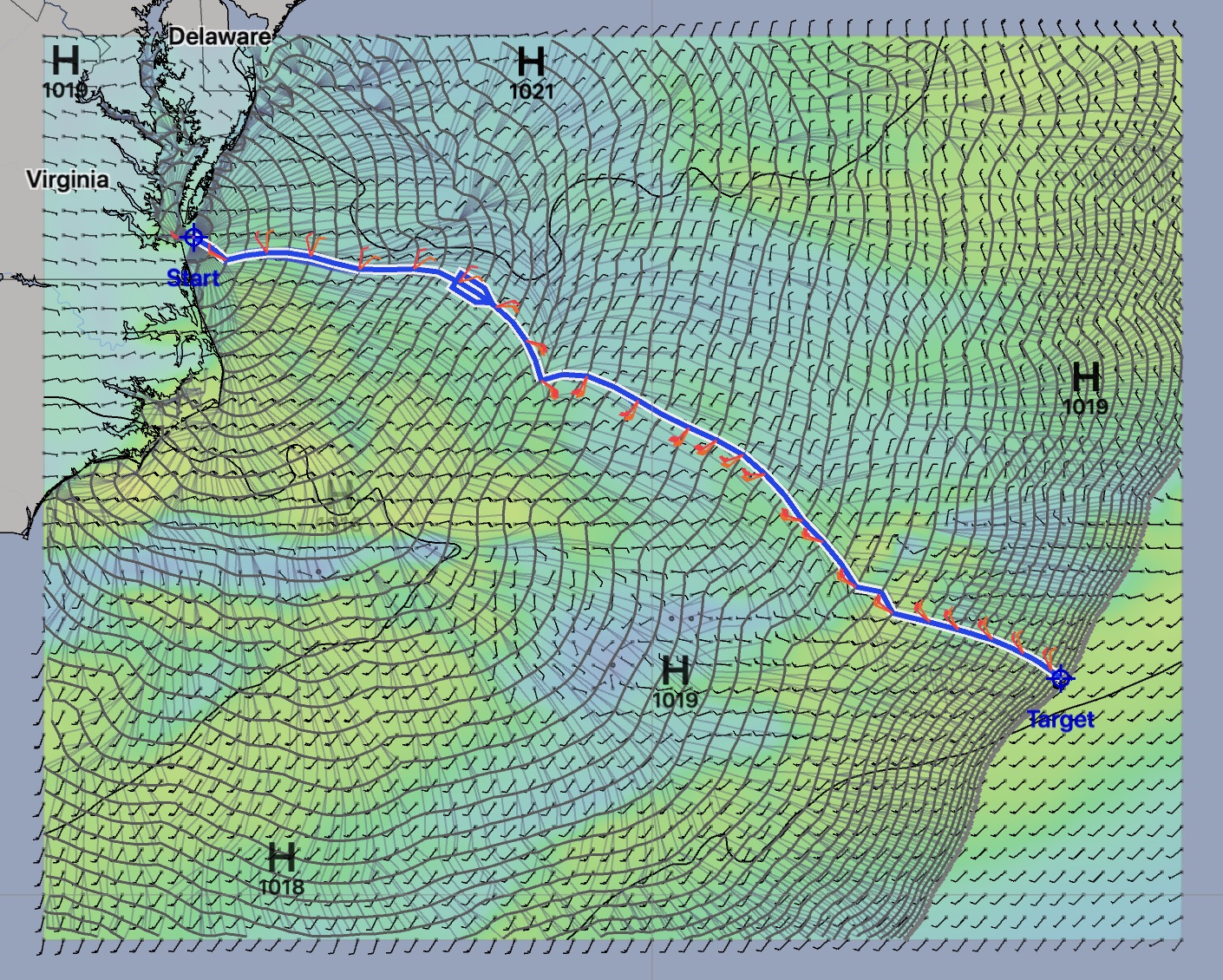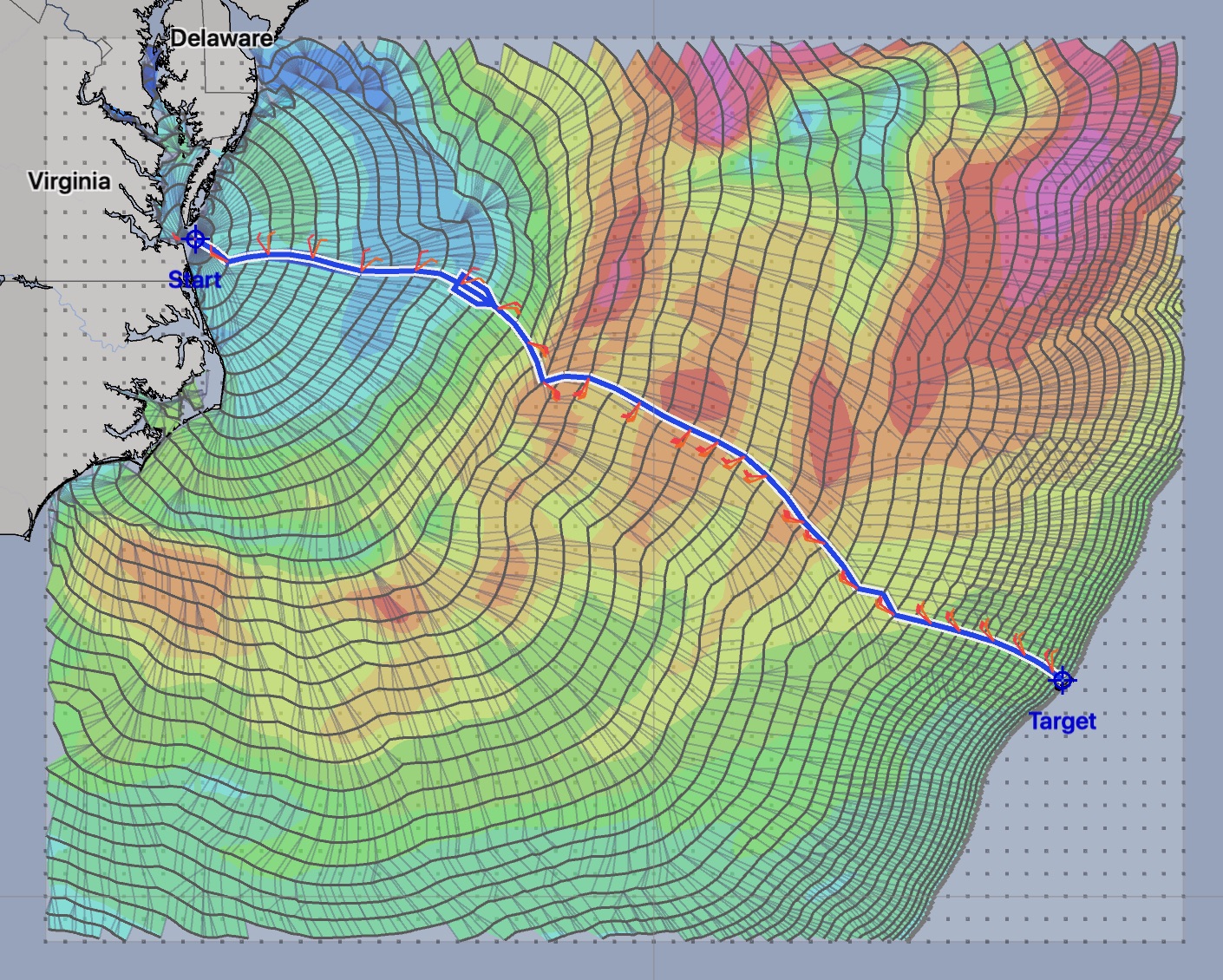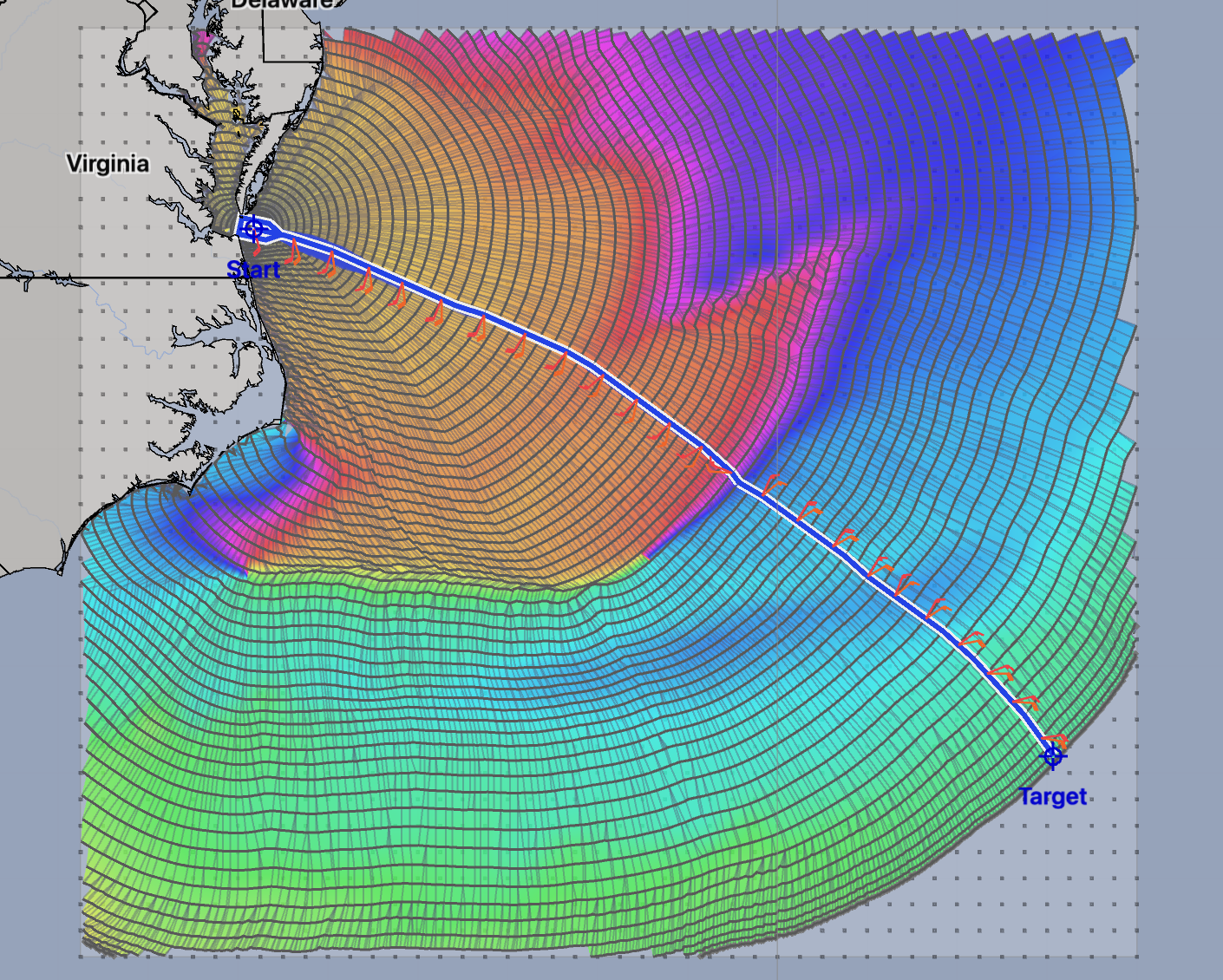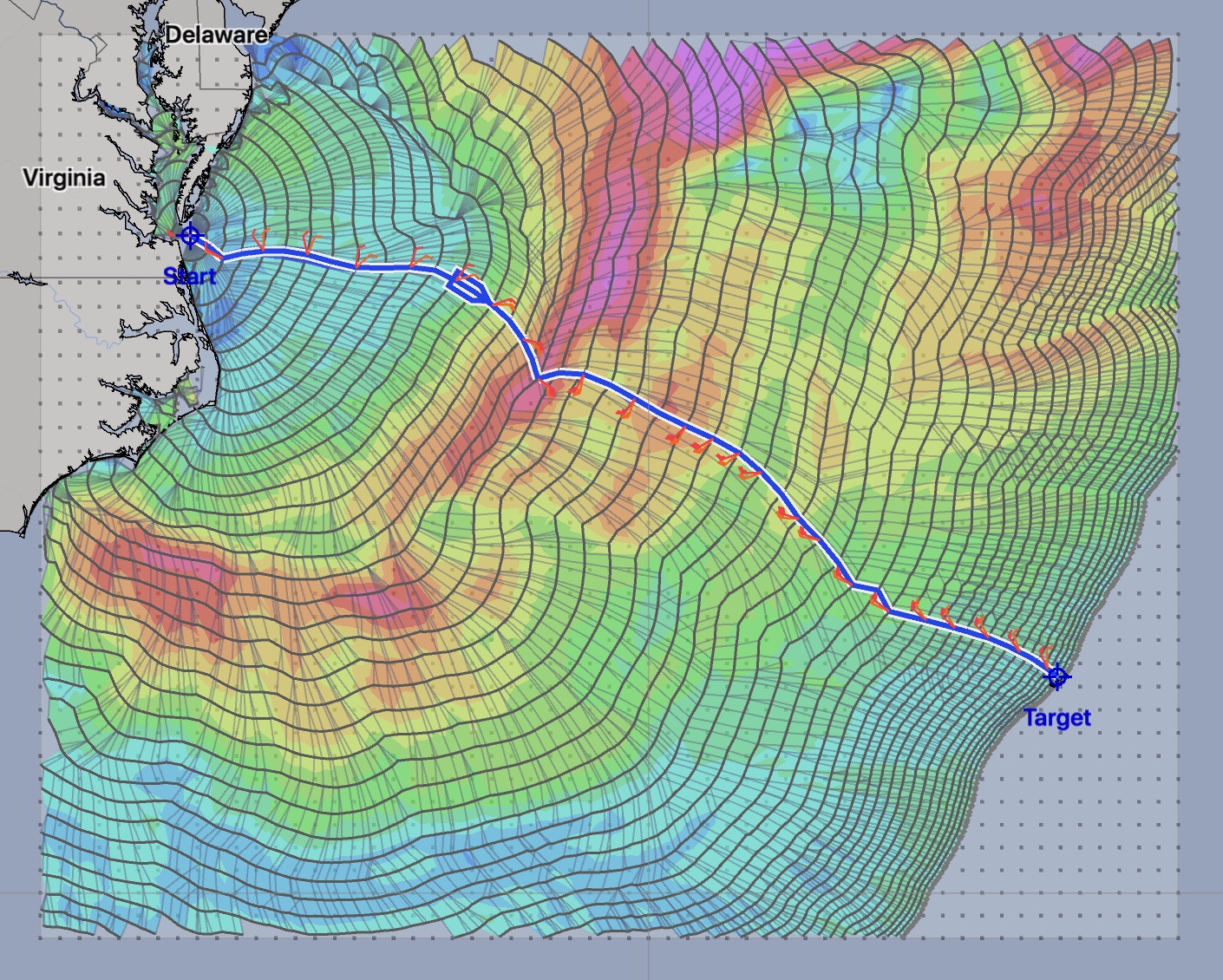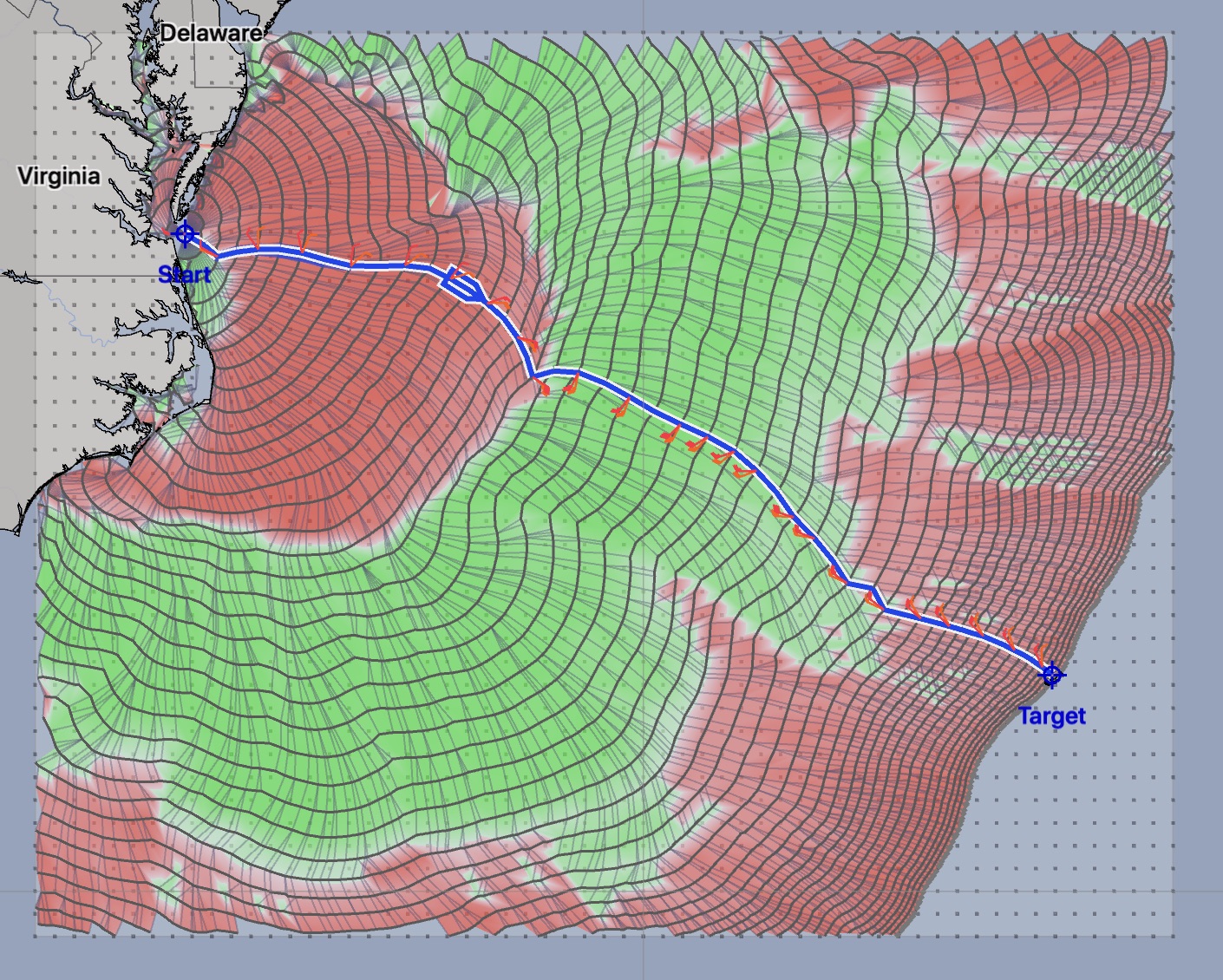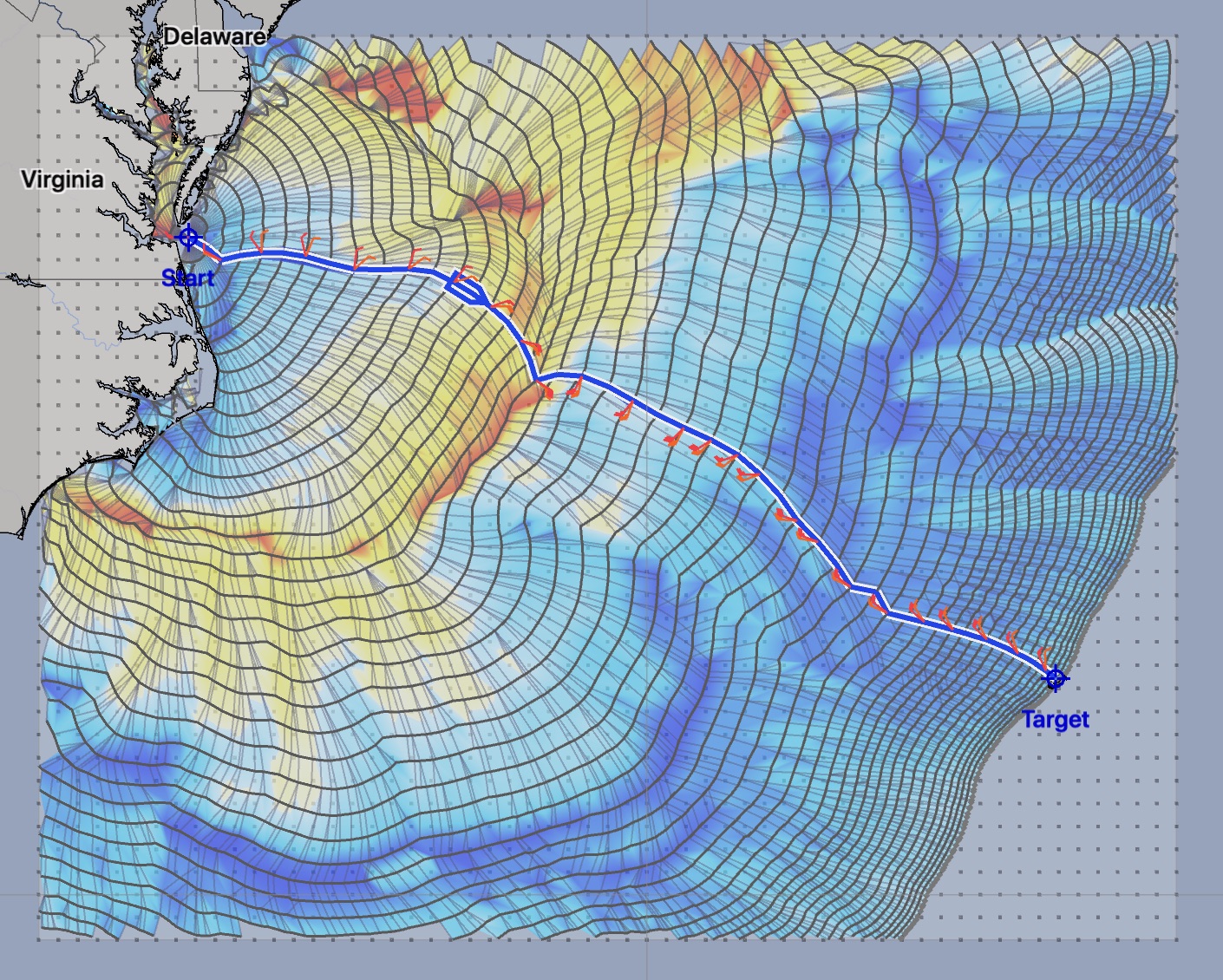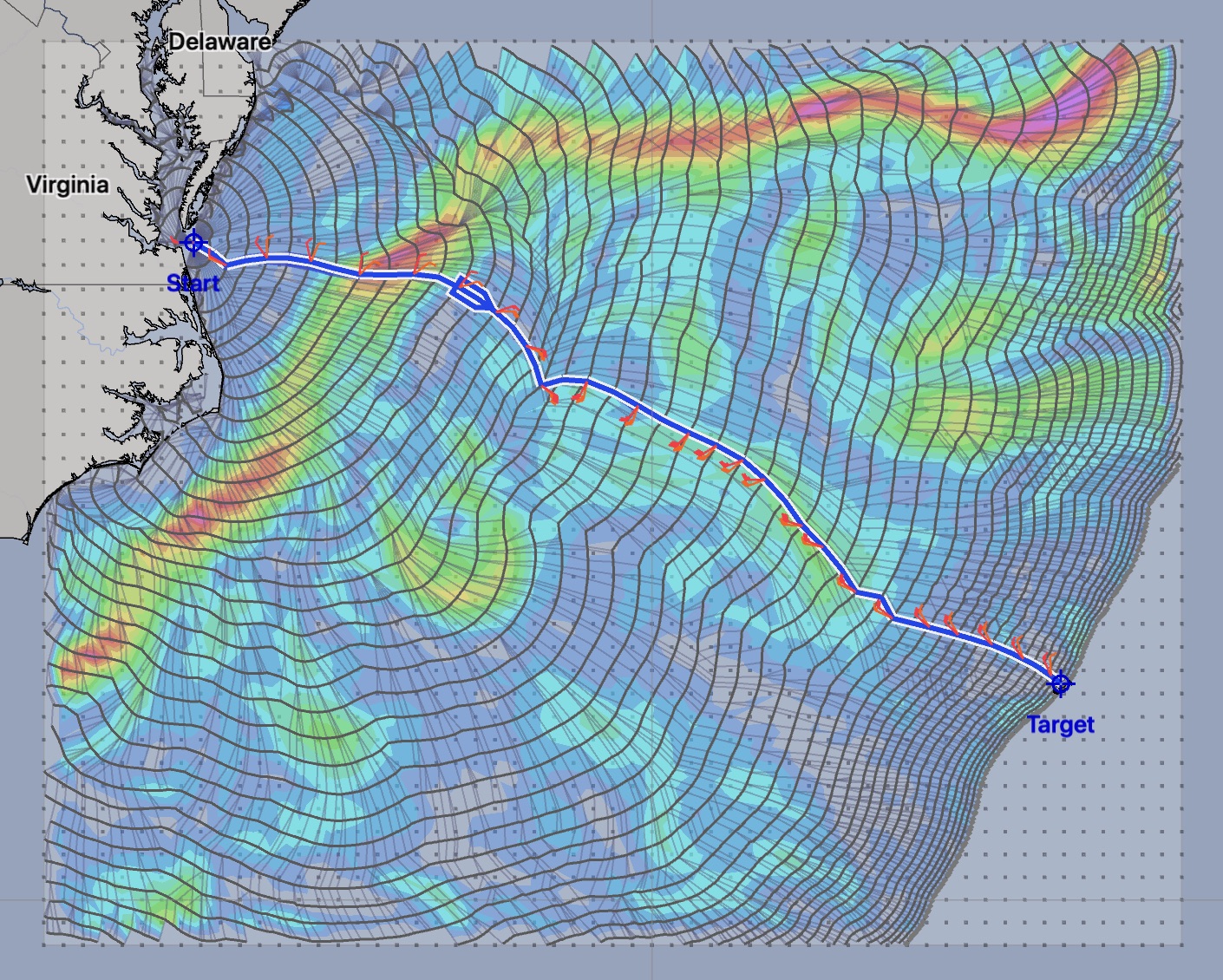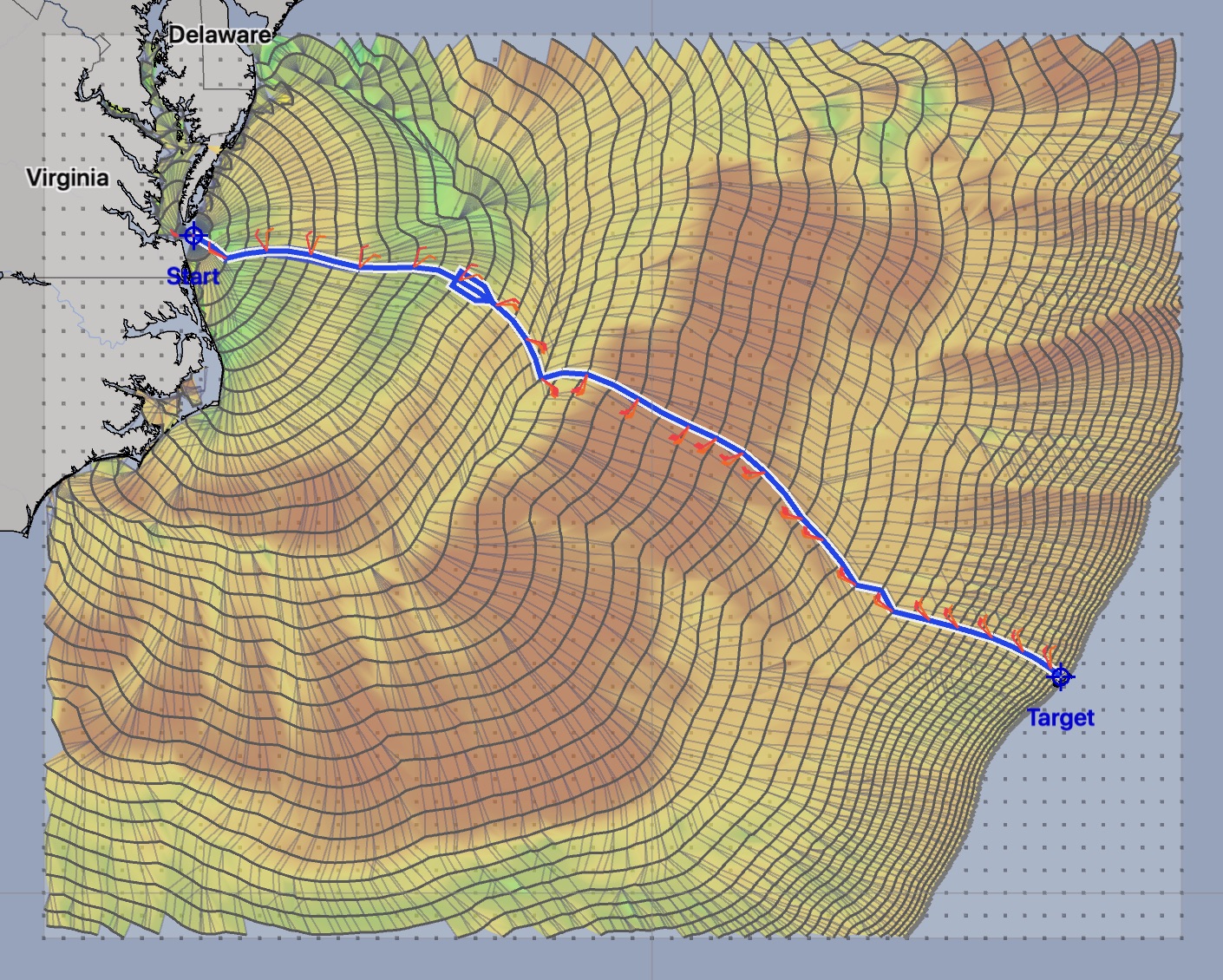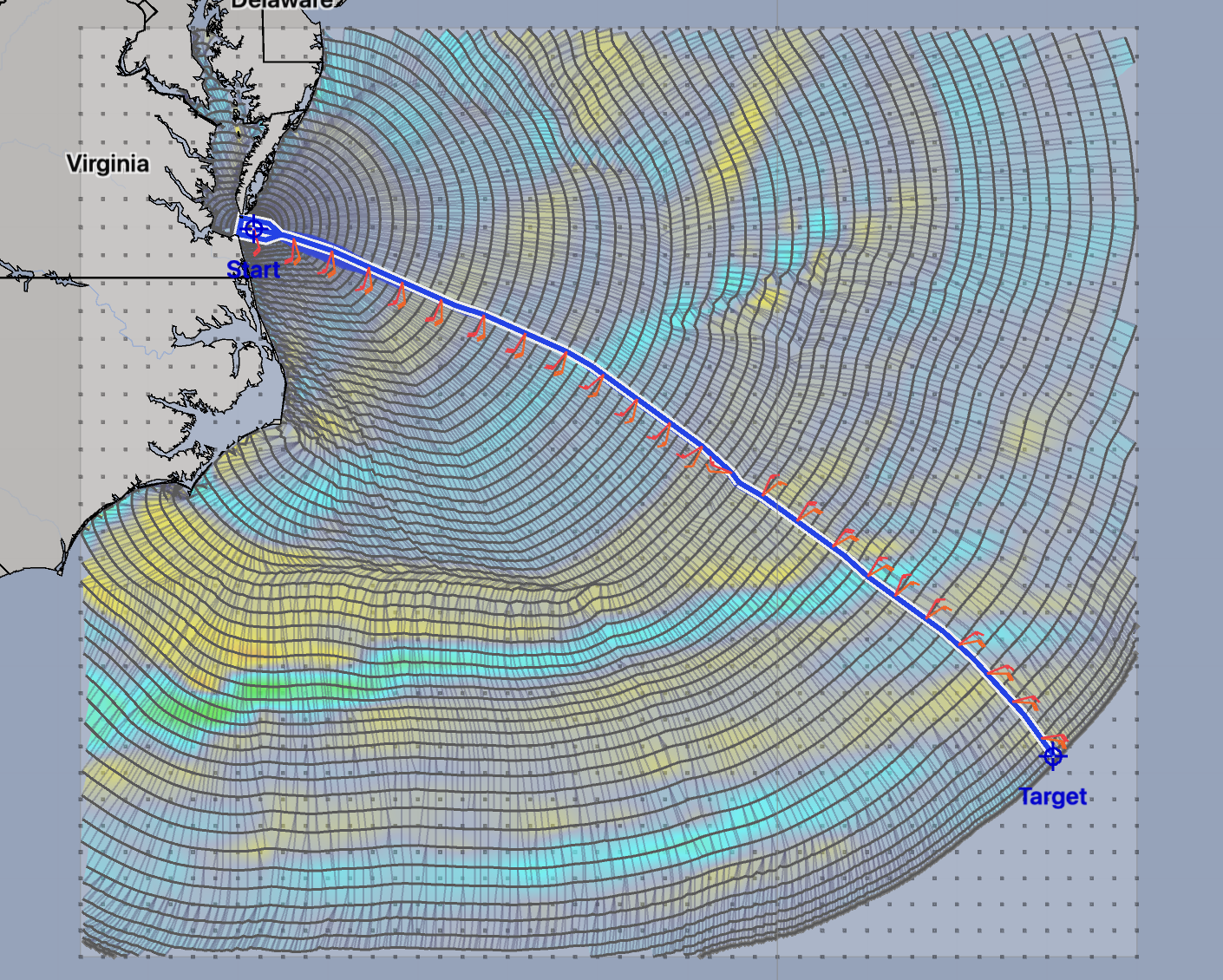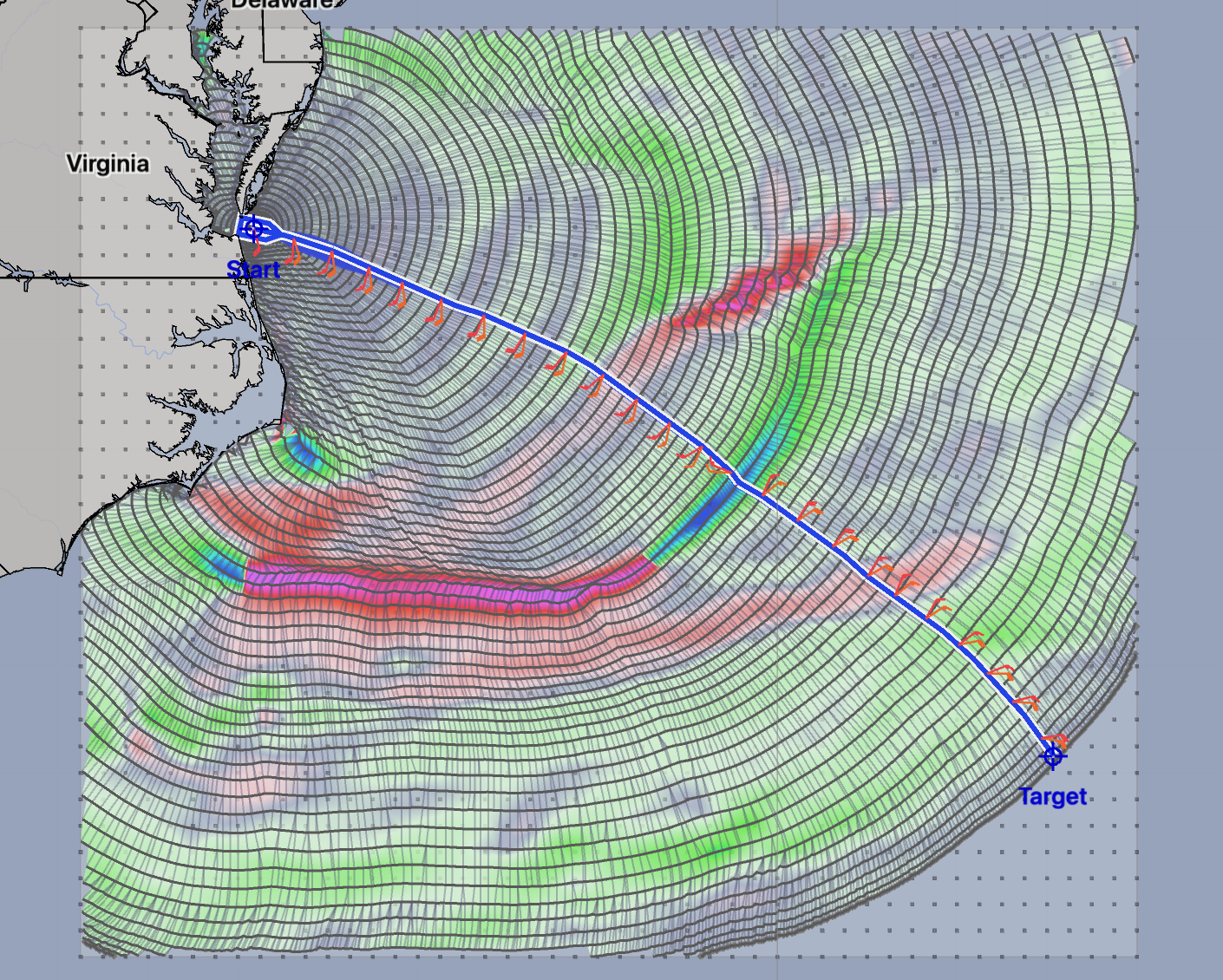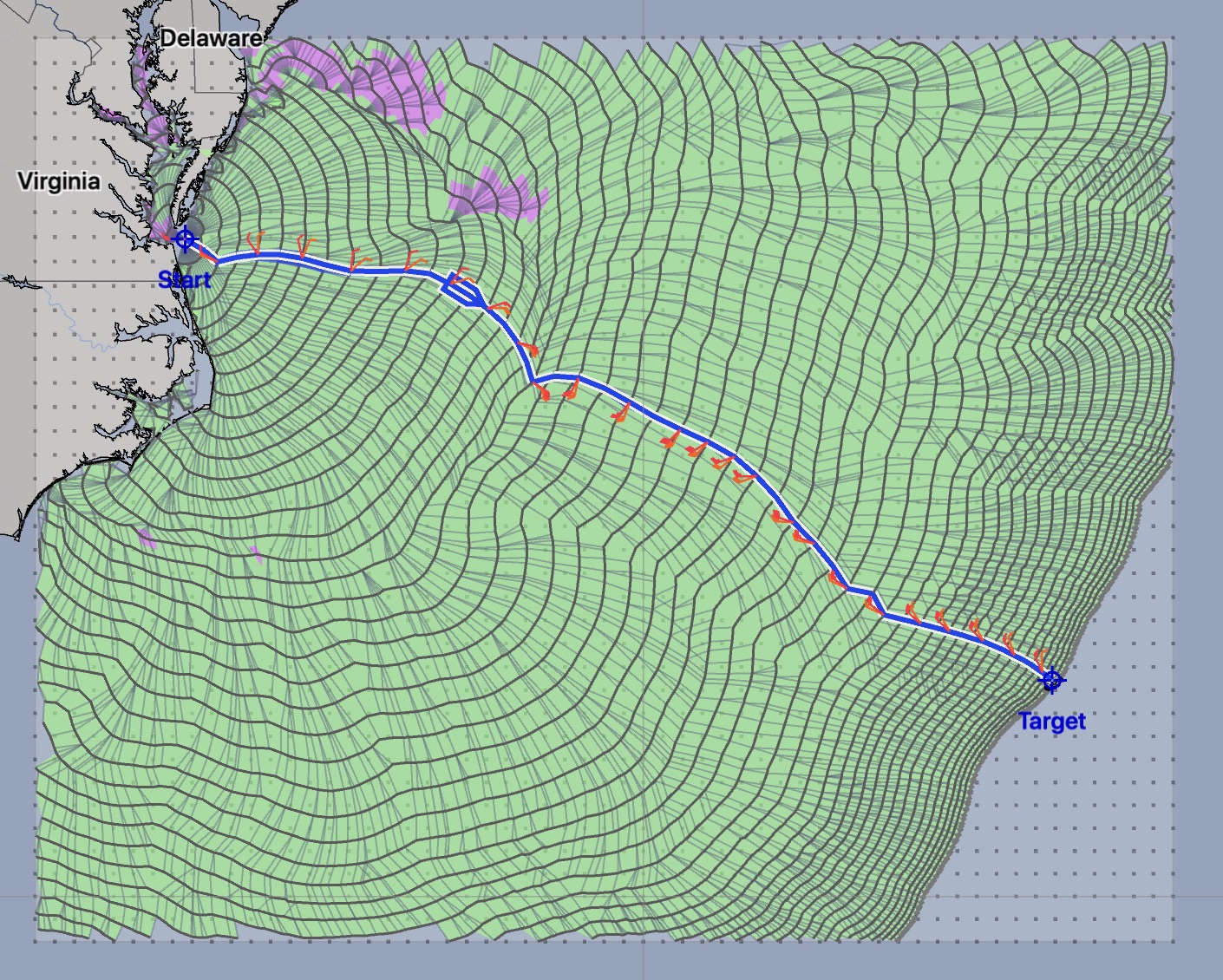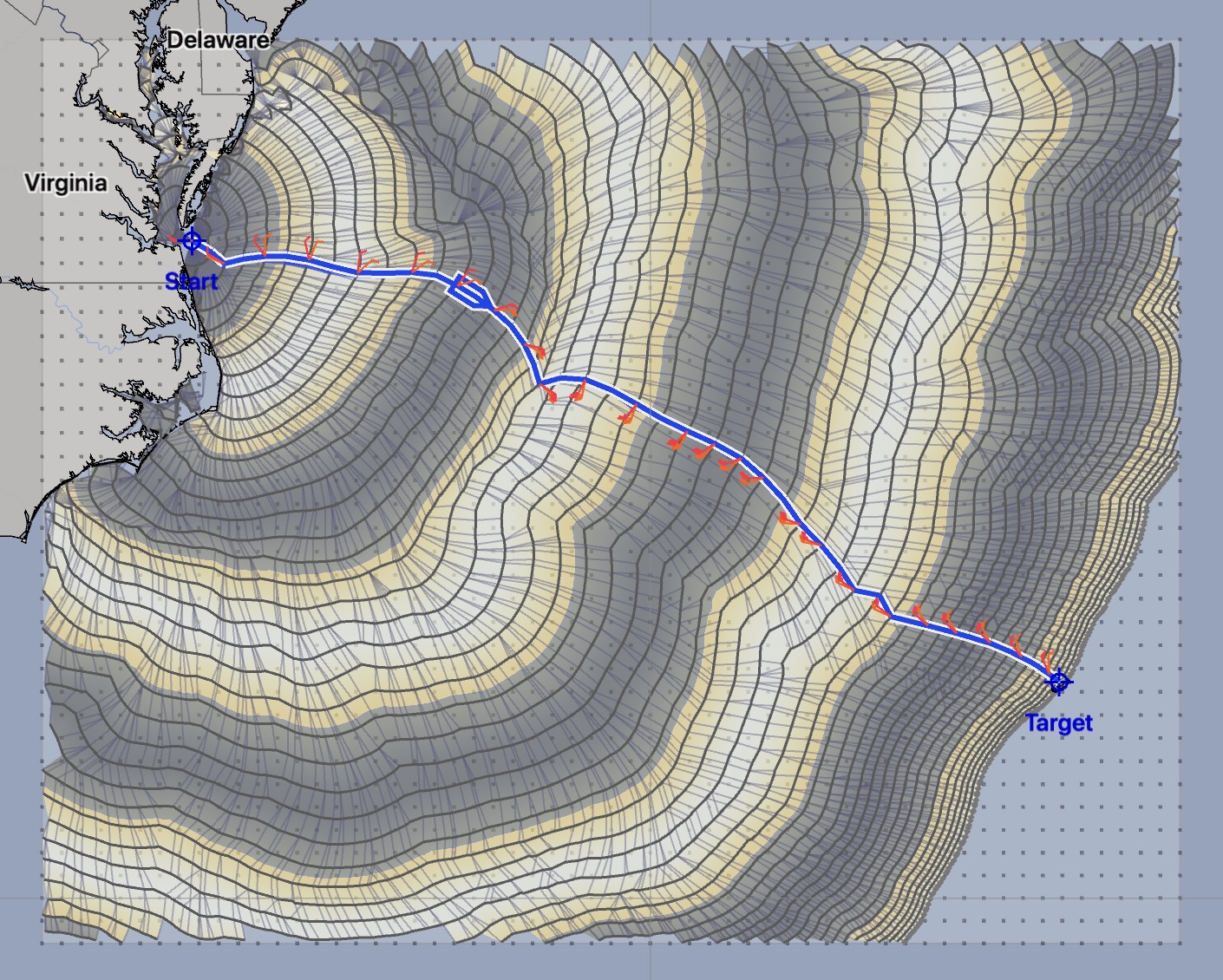There are many different ways to evaluate the results produced by the weather router solver. All of the various evaluation methods were first presented in the Getting Started | Evaluating the results page.
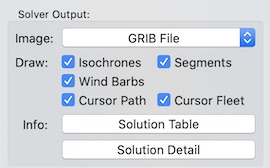
You can choose what the system will draw by turning on or off the various properties in the Draw section.
Draw area options.
You have control over how to view the isochrones and paths.
If you turn both isochrone options off, the isochrones are not shown at all. The different Draw options are:
- isochrones. Should the connected set of points for each isochrone be drawn?
- segments. Should the segments which connect a isochrone point to the point it came from be drawn?
- wind barbs. Do you want to see the wind conditions along the selected path?
- cursor path. Do you want to see the dynamic path drawn, for the path between the starting point and cursor?
- cursor fleet. Do you want to see all of the candidate positions that the solver sent out from an isochrone point?
The cursor fleet - examining the solvers decisions.
Using the cursor fleet you can see which headings, radiating out from each isochrone point, the solver considered as it progressed, building the isochrones one after another. Yellow lines indicate that a heading violated the upwind sailing angle limit. Orange lines indicate violations of the downwind sailing angle limit.
Looking at the middle image, some of the headings the solver considered at the given point violated the upwind sailing angle limit (they were heading too close to the wind.) Some of the headings violate the downwind limit, sailing too far downwind, and some of the headings resulted in their being less wind that was allowed. (In this case, the minimum wind was set to 5 knots apparent.)
When the isochrone images are surprising you in some regard, viewing the cursor fleet in those areas can often lead to understanding what is going on.
Analysis images.
The Image popup allows you to select from many different types of images. Samples of each of these are shown below. Click on any image to see a larger version.
The images show the indicated condition, through time, and across the full set of isochrones (the solution space.) You can think of these images as somewhat analogous to a meteogram, which shows weather conditions, through time, at a point.
There are a few points which may be helpful:
the no image version is useful when analyzing the isochrones. It is frequently useful to simplify the display.
when viewing the GRIB file image, click and drag on a path to modify the GRIB time to the indicated position on the path. This is extremely useful in understanding changes in direction for the paths.
the upwind / downwind images use red, orange and yellow to show upwind areas, and cyan and blue for downwind areas. As expected, there are more reds in the apparent image than when using the true angles (apparent wind angles being less of course.)
the port / starboard image uses red for port, green for starboard
the sail / motor image uses green when sailing, purple when motoring and orange if the boat has slowed below the threshold speed but is in the waiting period you have specified.
if you are sailing in an area where day / night land breezes are important, the day / night image may be a useful guide for where to expect those winds, so that you can plan accordingly.
There is one more point that should be highlighted with respect to the GRIB file image. It is possible for the solver to generate solutions for many different types of wind fields, for example using ensemble models or the NBM Oceanic probability wind fields. When you select one of the solution paths, perhaps by clicking on it, the GRIB display is modified so that the wind field shown is the one associated with the selected solution. For example, if you have five paths generated, one for each of the NBM probability wind fields, selecting the different paths will adjust the GRIB display.
Sailing modes
When the solver has created a path, and it is currently selected, a colored bar will be shown in the GRIB timeline that indicates how the vessel is moving along the path. The colors shown are the same as the colors used in the Sailing or Motoring analysis image: green for sailing, yellow for sailing slowly, purple for motoring and red for being hove to.
 Vessel sailing and hove-to.
Vessel sailing and hove-to. Vessel sailing and motoring.
Vessel sailing and motoring.In addition to showing how the vessel is moving, the colored bar also offers a quick visual indication of the start and finish times for the path. When you are doing departure planning, this is useful as the start time of each departure may not be the indicated start time (the time where the green start time indicator is placed.)
Solution table
If you have read through the Uncertainty section in the introduction, you may recall that this weather router is able to generate many variations for the solutions.
departure planning. The solver can generate variations which leave at different times, allowing you to analyze different departure times.
wind variations. The solver can accept ensemble files with many wind fields, probability winds from NBM Oceanic, or even generate routes using wind speeds from the gust parameter.
for sailboats which are allowed to motor, the solver can solve for both the pure sailing route and the mixed sailing / motoring route, to allow you to see how much motoring helps the situation.
The solution table allows you to manage the complexity when dealing with these many solutions.

There are several things to note with respect to this table:
selecting any row in the table will select that solution in the system, switching the displayed isochrones, image, etc
each column in the table can be selected, to sort the table on its value (ascending or descending.) For example, to sort the solutions by duration, click on the Duration column. Click again to reverse the sort order.
each column can be reordered and resized. Rearrange the columns into the order you prefer using drag and drop.
if there is a solution you are not considering, turn it off by clicking on its show button.
the menus can be used to show or not show the different variations indicated. For example, to only show departues from day three of a departure planning session, use the departure menu to select day three.
if you have many rows which are not being shown (have their show button toggled off) you can remove these from the table by turning on the visible only button in the buttom right of the window. They are not being deleted, only hidden from the table.
Solution details.
You are able to see a detailed report on the selected solution path by clicking on the Solution Detail button.
Do you want to see a sample report? Click here.
Note that the solution details report has its own set of settings, where you have control over some of the fields which are shown, and how they are presented.
Meteogram
You can view the weather route as a meteogram of values across its length. This is accessed by clicking on the button in the top right corner of the weather routing text information group:
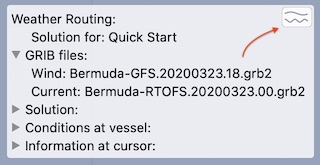
When you do that, you will see something like the sample shown below:
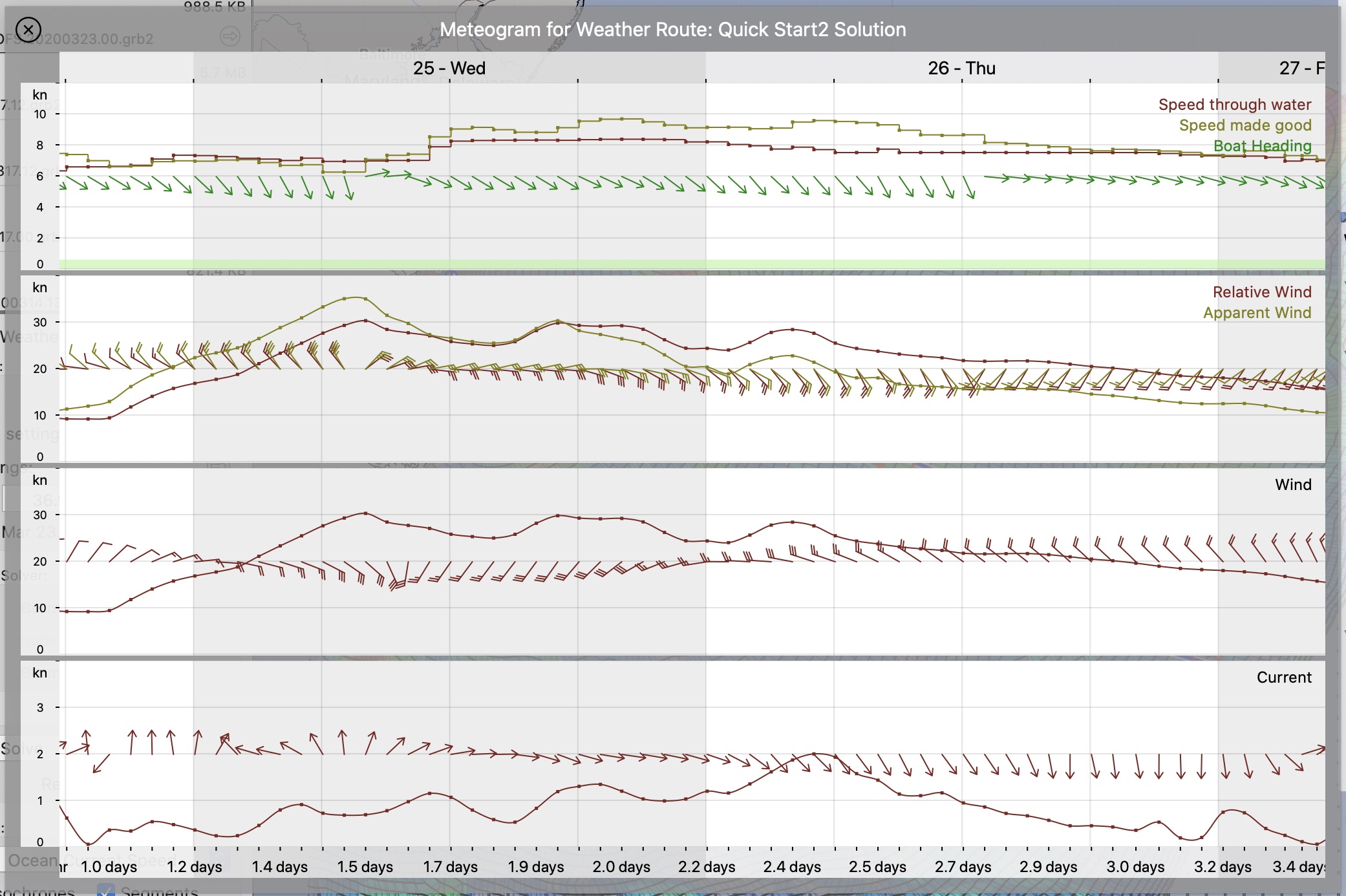 (Click above for larger version.)
(Click above for larger version.)Note that the first row, where the vessels speed through water is shown is a little unusual. The speed is shown as a stairstep graph, rather than a smooth curve. This correctly reflects what the isochrone algorithm is doing. The boat speed is determined at the start of each isochrone and then held constant until finishing that isochrones time interval. This is followed by the wind being evaluated at the new location and next isochrone time, which in turn, determines the speed for the following interval.
